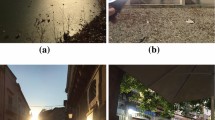Abstract
In some cameras, defects in the sensor grid induce fringing artifacts near high-contrast regions. This false coloration is usually purple in color and is termed as a purple fringing aberration (PFA). Since PFA effects find applications in image forensics, it becomes important to discover ways to detect these fringes reliably and then use them for further analysis. Much of the literature rely on static gradient and saturation thresholds, selected through progressive experimentation for localizing these fringes. Given the spectral diversity associated with these fringes over a wide variety of natural images, it becomes progressively difficult to find a specific choice of parameters for detecting these fringe affected pixels. Our contributions are twofold: In the first part, we propose a content adaptive relative threshold-based PFA detection procedure which is insular and does not require any form of external training or tuning. In cases, where the fringes are mixed with background texture and this mixture exhibits extreme gradient magnitude profile variations, the proposed baseline approach demands manual tuning. To overcome this problem and to ensure complete automation, an iterative extension of the same baseline algorithm based on region growing is proposed.






Similar content being viewed by others
References
CCD versus CMOS. http://www.dallmeier.com/fr/produits-electronic/cameras/bon-a-savoir/ccd-vs-cmos.html
Chung, S.W., Kim, B.K., Song, W.J.: Detecting and eliminating chromatic aberration in digital images. In: 2009 16th IEEE International Conference on Image Processing (ICIP), pp. 3905–3908 (2009). doi:10.1109/ICIP.2009.5413971
Dyer, C.R.: Additive Color. Class notes, Department of Computer Science, University of Wisconsin. http://pages.cs.wisc.edu/~dyer/ah336/papers/07_additive-color.pdf
Ju, H.J., Lee, D.K., Park, R.H.: Color fringe removal in narrow color regions of digital images. Signal Image Video Process. 8(8), 1651–1662 (2014). doi:10.1007/s11760-012-0408-z
Ju, H.J., Park, R.H.: Colour fringe detection and correction in YCbCr colour space. IET Image Process. 7(4), 300–309 (2013). doi:10.1049/iet-ipr.2012.0524
Kang, S.: Automatic removal of purple fringing from images. US Patent App. 11/322,736 (2007). http://www.google.com/patents/US20070153341
Kim, B., Park, R.: Automatic detection and correction of purple fringing using the gradient information and desaturation. In: Proceedings of the 16th European Signal Processing Conference, vol. 4 (2008)
Kim, B.K., Park, R.H.: Detection and correction of purple fringing using color desaturation in the xy chromaticity diagram and the gradient information. Image Vis. Comput. 28(6), 952–964 (2010). doi:10.1016/j.imavis.2009.11.009
Nakamura, J.: Image Sensors and Signal Processing for Digital Still Cameras. CRC Press, Boca Raton (2005)
Yerushalmy, I., Hel-Or, H.: Digital image forgery detection based on lens and sensor aberration. Int. J. Comput. Vis. 92(1), 71–91 (2011)
Author information
Authors and Affiliations
Corresponding author
Rights and permissions
About this article
Cite this article
Malik, P., Karthik, K. Iterative content adaptable purple fringe detection. SIViP 12, 181–188 (2018). https://doi.org/10.1007/s11760-017-1144-1
Received:
Revised:
Accepted:
Published:
Issue Date:
DOI: https://doi.org/10.1007/s11760-017-1144-1




